What's the best time to visit the Philippines?
The best time to visit the Philippines is between January and April, during the dry season. This period offers ideal weather with warm, sunny days perfect for outdoor adventures, sightseeing, and beach activities. February, March, and April are particularly favorable, with minimal rainfall and pleasant temperatures, making it the perfect time to explore the islands.
As one of the biggest archipelagos in the world (over 7,640 islands!), the Philippines is an amazingly diverse country where you can choose the kind of adventure you’re looking for. The islands are big on natural beauty and waterfront fun, but its buzzing cities and historic sites are just as appealing to visit.
Tropical beaches, cascading falls, and mighty rivers flow among mountainous rainforests and undulating hills across the islands, while lively cities ring with sounds of honking jeepneys and busy street markets.
You’ll always find something that excites you when you travel to the Philippines, so let’s take a look at the best time to visit!
Overall Best Time to Visit the Philippines
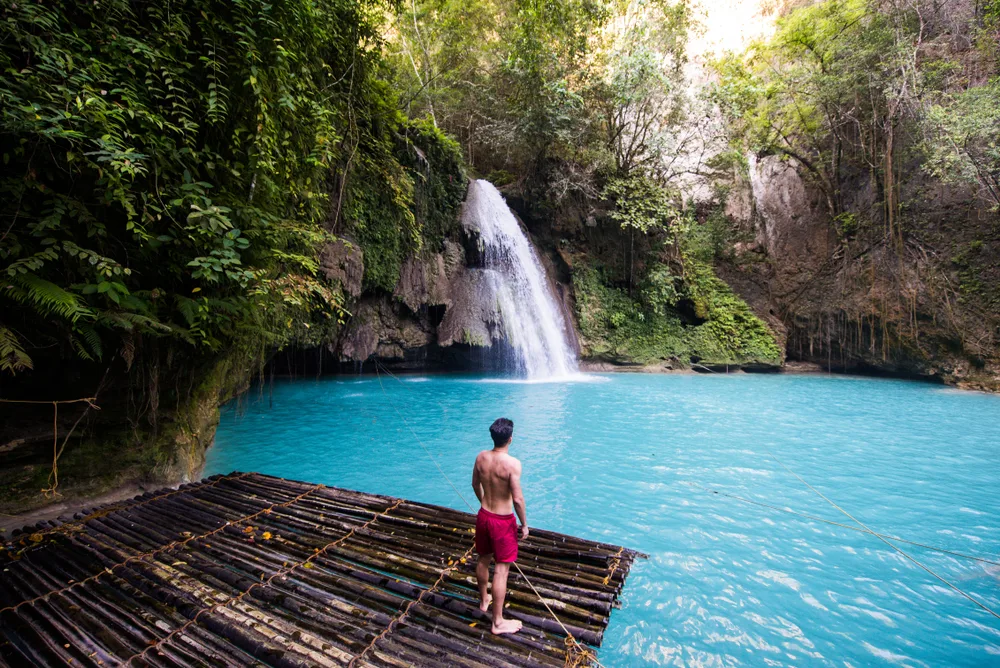
Oneinchpunch/Shutterstock
The overall best time to visit the Philippines is between January and April during the warm and sunny dry season, offering ideal conditions for beaches, outdoor and city exploration, and sightseeing.
The Philippines is particularly nice to visit during January, February, March, and April when the weather is prime for outdoor adventures, exploring cities and markets, visiting restaurants and shops, and checking out some of the coolest historic sites and landmarks around the archipelago.
The tropical maritime climate in the Philippines means there are two seasons: The monsoon season and the much nicer dry season. Daily highs range from 85°F to 93°F this time of year across the islands, with Manila seeing temperatures an average 1-2° warmer than other parts of the Philippines.
Rainfall varies from about 0.6″ (Puerto Princesa in March) to 5.2″ (Davao in January) each month, so the area you plan on visiting will determine how much precipitation you’ll see while you’re here. February, March, and April see the driest weather overall.
The price per night varies by month in the Philippines, but averages from Google Hotels data for 2-5 star hotels across the islands shows that January through April is a very affordable time to book your hotel room:
- January: $61/night
- February: $58/night
- March: $52/night
- April: $60/night
This period also ensures you won’t have to deal with days-long downpours that make beach trips, national park visits, and water sports harder to enjoy. Dry conditions also mean smaller roads are passable in the more remote areas of the islands if you’re big on exploring.
It’s a great time of year to head to the beaches of El Nido and dive shipwrecks off Coron Bay (Palawan), go river rafting or visit the Tarsier Sanctuary on Bohol, wander the markets and Fort Santiado in Manila, or enjoy the nonstop nightlife on Boracay.
There’s plenty going on between January and April around the islands, too:
- Feast of the Black Nazarene (Jan. 9): Millions arrive to celebrate and honor the life-sized Black Nazarene statue as it is carried through the streets of Quiapo, Manila after a massive feast.
- Kuyamis Festival (Jan. 6-11): Dancing in the streets, music, traditional lumad customs and foods (like coconut) are enjoyed in Cagayan de Oro City in the Misamis Oriental province.
- Sinulog Festival (mid-Jan.): Nine days before the 3rd Sunday in January, locals gather in Cebu City to celebrate the procession of the Santo Niño de Cebú statue of baby Jesus with a huge, costumed parade and dancing.
- Cagsawa Festival (Feb.): The Mayon Volcano’s 1814 eruption is marked with a festival and visits to the Cagsawa Ruins Park (Albay) for festivities, food, and dancing in the week-long event.
- Tinagba Festival (Feb. 11): Our Lady of Lourdes is honored as farmers join a harvest procession and offering in traditional carts filled with local produce and led by carabao.
- Panagbenga/Bagiou Flower Festival (Feb.): Similar to the Rose Bowl, this parade of flowered floats makes its way through Baguio (Luzon), sweetening the air and drawing locals and tourists alike.
- Malisimbo Festival (Mar.): Arts, music, native cultures, and the environment are honored in Puerto Galera with live music, handicraft booths, artwork, and food stalls.
- Kadaugan sa Mactan (Apr.): The Battle of Mactan (between Spanish explorers and the local chieftain of the time, Lapulapu) is reenacted on the beach in Cebu with great fanfare.
- Isla Carahans Festival (Apr.): The entire town joins in a festival celebrating the natural beauty and produce of Caramoan, Camarines along with indigenous rituals and dancing.
We find that visiting between January and April sets you up for the best possible trip to the Philippines, as the rains have subsided by December and the weather is steadily warming up for ideal beach days, national park and wildlife sanctuary visits, and sightseeing.
Cheapest Time to Visit the Philippines
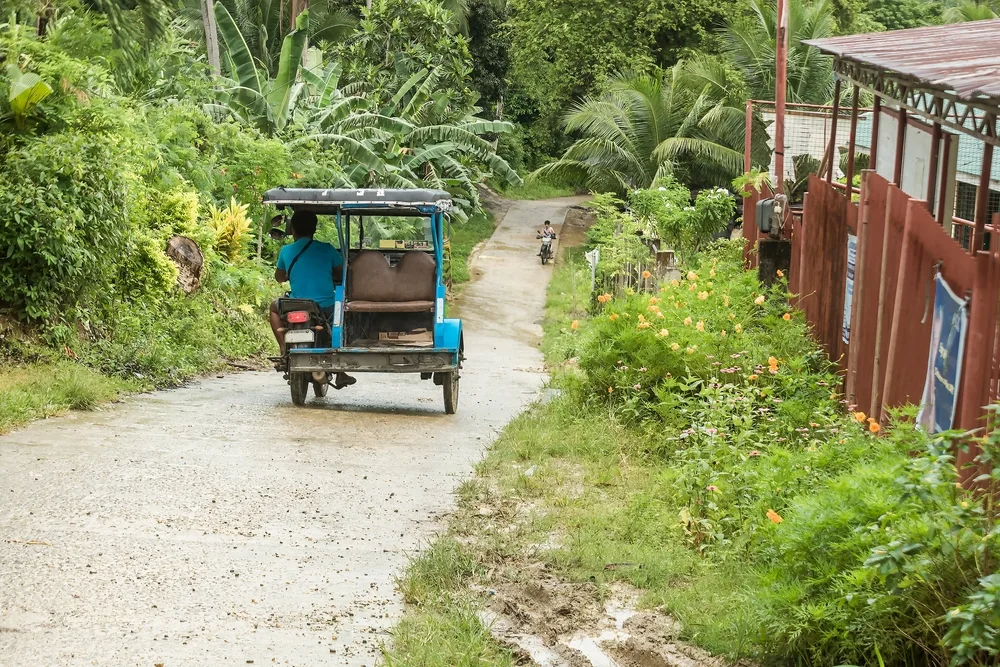
MDV Edwards/Shutterstock
The cheapest time to visit the Philippines is during March, when highs inch closer to the 90s with dry conditions and hotels compete with pricing to draw tourists in.
March is the cheapest month to visit the Philippines, with average hotel prices dropping to around $52/night this month (according to data from Google Hotels). Similarly low hotel prices can be found in June ($57/night on average) and in February and May ($58/night).
For comparison purposes, take a look at the 4 overall cheapest months of the year to visit the Philippines:
- February: $58/night
- March: $52/night
- May: $58/night
- June: $57/night
It’s not a massive price cut from the rest of the year — about $12 less per night in March than the most expensive month, December — but it’s part of the idyllic dry season from December to April and one of the best times to visit overall.
You’ll find flights are also at their cheapest from the U.S. to the Philippines during March, according to Skyscanner airfare data. The aggregator found March flights to Manila as low as $620, while January flights were around $1,200.
That makes this month the absolute prime month to travel if you’re hoping to save money on your trip to the Philippines. Prices aside, you couldn’t ask for better conditions to enjoy this island country than you’ll find during the month of March.
March is the driest month of the year across the Philippines, seeing as little as 0.6″ (Puerto Princesa) to a maximum 3.3″ (Samal) of rain on average this month. Daily highs range from 87°F (Cebu City) to 90°F (Manila) during March, but things are cooler in the mornings and evenings as temperatures settle into the upper 70s.
Check out the festivities and events happening during the month of March around the Philippines:
- Island Garden City of Samal Festival (early Mar.): Samal’s anniversary is honored during the first week of March with an island-wide festival with live music, dancing, food stalls, and contests.
- Ligao Sunflower Festival (mid-Mar.): Ligao’s anniversary is celebrated with a week-long festival with dancing in the streets and decor that highlights the radiant blooms of native sunflowers that grow in the local Kawa-Kawa Natural Park.
- Holy Week (Mar. or Apr.): The death and resurrection of Jesus is honored solemnly with processions and events starting Palm Sunday with reenactments, Holy Thursday, Good Friday, and Easter Sunday around the islands.
- Alimango Festival (late Mar.): Crabs and local seafood are the stars of the show during this annual feast and parade with crab races, contests and games, food booths, and an agricultural fair.
March is also the perfect month to head to Puerto Princesa to visit Nagtabon Beach and the Subterranean River National Park, Camiguin to hike lush jungle trails to the volcanic Timpoong-Hibok-Hibok Natural Monument, or Cebu for its 16th-century Spanish forts and landmarks like the Basilica Minore del Santo Niño church.
Least Busy Time to Visit the Philippines
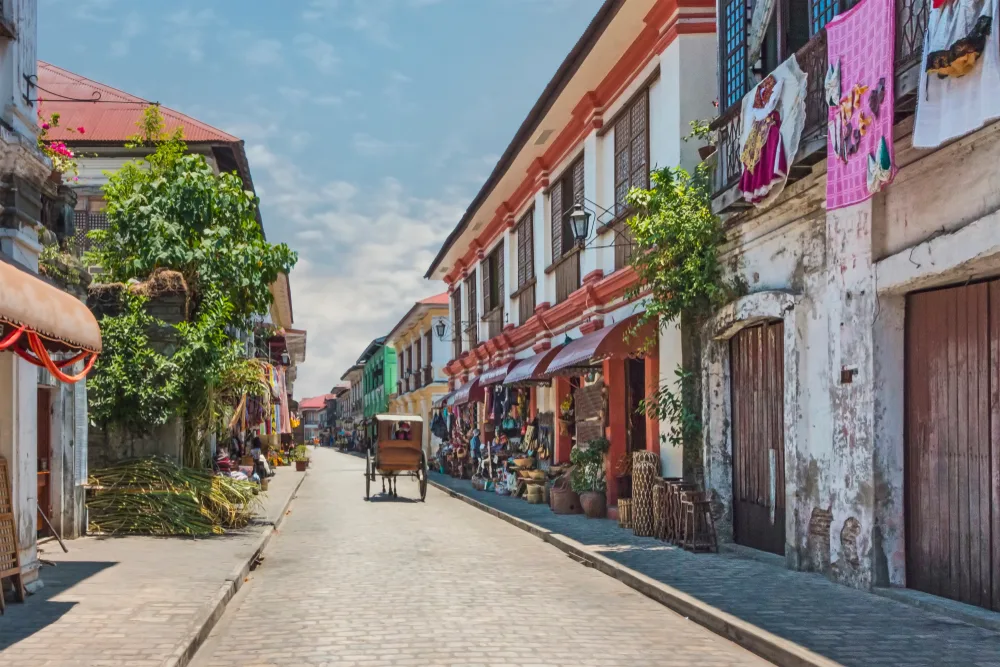
Daniel Andis/Shutterstock
The least busy time to visit the Philippines is April through June, covering the end of the dry season and the kickoff of monsoon season when heavy rains pelt the islands.
While many will tell you that the entire rainy season is the least busy time to visit the Philippines, even the downpours can’t keep away the crowds that arrive for holidays and big festivals. You’ll find the fewest tourists between April and June.
This covers part of the warm dry season (April) and the lead-in to the rainy monsoon season (May and June). April sees daily highs between 89°F and 93°F across the islands, while May and June are slightly cooler with highs between 88°F and 92°F.
The temperatures drop during May and June with all the rain, which can total around 2.6″-4.8″ in May and 5.3″-8.8″ in June. April is nice and dry by comparison, seeing between 1.3″ and 3.8″ of rainfall.
You’ll find some great prices on hotel rooms during this less-busy time to visit:
- April: $60/night
- May: $58/night
- June: $57/night
Flight prices are also well below their peak season prices, with Skyscanner reporting flights found as low as $682 this time of year from the U.S. to Manila. You won’t have trouble finding things to do whether the weather is sunny and dry or rainy, either.
Come surf Cloud 9 on the island of Siargao this time of year with peak swells from May to November, visit the San Agustin Museum and wind through the walled Old Town of Intramuros in Manila to see the Manila Cathedral, or head to the Subterranean River National Park in Puerto Princesa to avoid a rainy day.
There are plenty of other things to do in the Philippines this time of year, so look for events like these wherever you end up staying:
- Alinao Festival (Apr./May): The traditional culture of the Malinaonons is celebrated with a dancing contest in the streets and live music in Malinao, Albay.
- Rodeo Festival (Apr.): Held in Masbate, this festival features American-style rodeo events with cows, horses, and lasso competitions along with a carabao race.
- Sakayan Festival (Apr.): Traditional outriggers, sakayan, are highlighted and celebrated as they’re used to bring in a massive fish bounty, while locals play drums and instruments as others dance to the rhythm in Isabela City, Basilan.
- Abaca Festival (May): This festival honors the indigenous Catandunganon people and their dress, food, music, and artwork along with regional produce and crafts in Catanduanes.
- Palong Festival (May): Celebrated in Capalonga, Camarines Norte, this festival involves a big street dance party and stalls set up with fresh, local produce, delicious street food, and regional agricultural products.
- Naro Festival (Jun.): People take to the streets and dance to represent their barangay, or neighborhood, in this town-wide competition and festival that promotes the town’s anniversary in Dimasalang, Masbate.
If avoiding big crowds is your main goal while visiting the Philippines, you’ll find that anytime between April and June is great. April has the best weather, but there are fewer people around in May and June.
Worst Time to Visit the Philippines
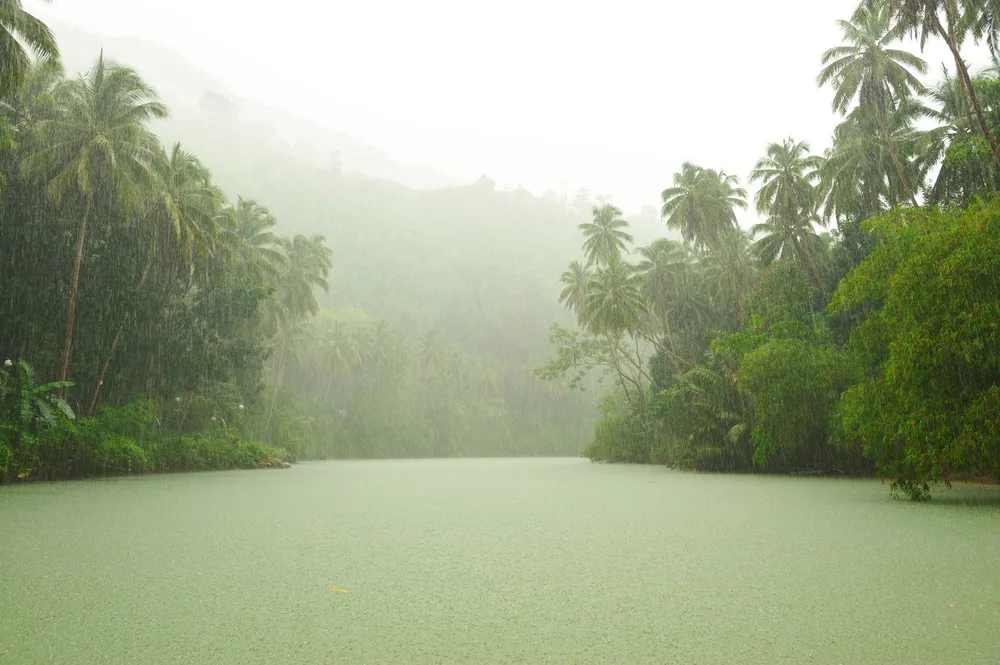
Haveseen/Shutterstock
The worst time to visit the Philippines is during July and August — the wettest months of the year in the middle of the rainy and stormy monsoon season.
The once-calm ocean waters become turbulent and more dangerous, clouds cover the sun, and heavy rains fall up to 20 days each month during July and August in the Philippines. It’s not a great time to visit the islands unless you’re planning on sticking to indoor attractions in Manila.
Even then, the torrential rains will interfere with the quality of your visit. Traffic gets worse, the kitschy jeepneys roll plastic coverings over the windows, and you’ll find yourself rushing along to duck indoors every chance you get. Hotel prices aren’t even at their lowest this time of year:
- July: $61/night
- August: $59/night
Temperatures are warm when you can catch a rare ray of sunshine this time of year, with highs ranging from 87°F to 89°F across the islands. With the extra moisture, it can be a bit miserable during these two months.
Still, you can enjoy activities like exploring Baguio City’s museums, bookstores, and cafes, going white water rafting on the Cagayan de Oro River in Northern Mindanao, or shopping at the massive Greenhills Shopping Center indoor market in San Juan, Luzon.
- Libon Paroy Festival (Jul.): This festival honors rice, or paroy, and its abundance thanks to the ideal growth conditions in Albay with rice-based dishes, sporting events, and a street parade in Libon, Albay.
- Lubid Festival (Jul.): A massive procession and parade, Sayaw Paralubid, takes place along with the regional Feast of Mt. Carmel in Malilipot, Albay as locals highlight indigenous culture and food.
- Subayan Keg Subanen Festival (Jul.): Ozamiz City comes to life with dancing and music as competitions and games take place among members of all the 50+ surrounding neighborhoods for this anniversary celebration of the city’s founding.
- Guinobatan Longganisa Festival (Aug.): Food, live music, and traditional dance are all part of this festive event in Guinobatan, Albay that centers around longganisa (Spanish sausage) dishes and street food, complete with the Culinaria Longganisa Cooking and Making Contest.
- Pangapog Festival(Aug.): The harvest season is celebrated on Samal Island, Davao with lavish costumes, feasts, sporting events, parades, and competitions among the locals as everyone enjoys fresh, traditional food together in the streets.
Typhoons are also a major risk factor in July and August, especially on the Pacific-facing side of the islands (like the Bicol region, north Luzon, and Eastern Visayas). It’s important to check weather forecasts regularly if you have to visit in July or August.
Things to Consider
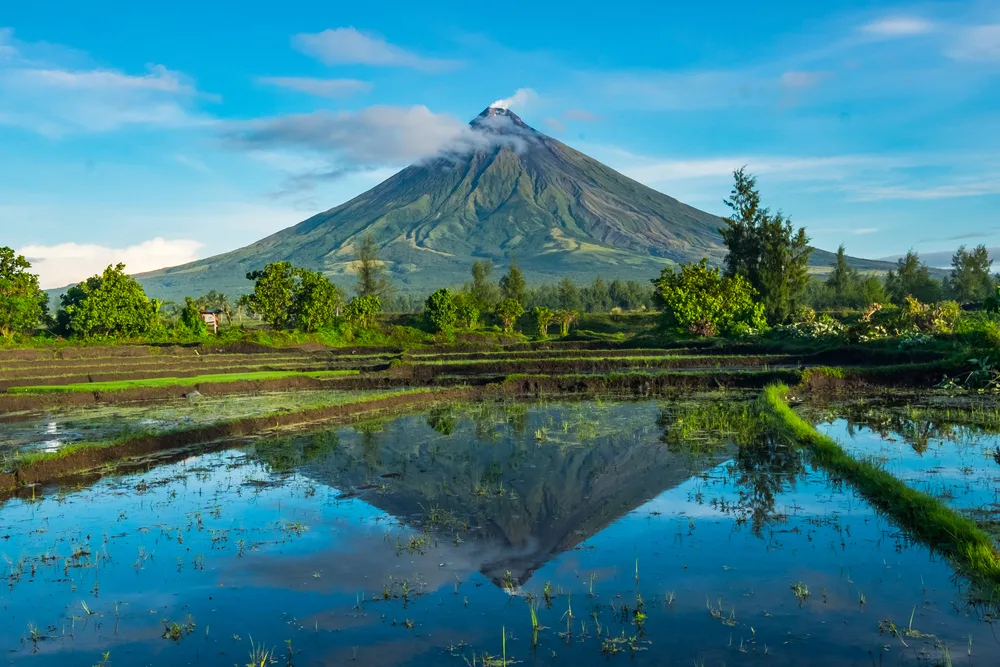
Puripat Lertpunyaroj/Shutterstock
If you’re excited to come to the islands and experience the massive range of activities, attractions, and landscapes they have to offer, knowing the best time to visit the Philippines is only the beginning. Here are some helpful travel tips to keep in mind while you start planning!
- It’s not the most tourist-friendly country. Travelers often complain about the Philippines’ infrastructure, traffic problems, and regular airport delays. You might run into issues with public transportation, overpricing on goods and food, and places that only accept cash. Prepare accordingly and steer clear of the most rural areas if you want more convenient travel.
- Air travel makes island hopping easy. Domestic flights to other islands in the Philippines can help you explore more of the country in less time than it takes to travel by ferry (Manila to Palawan takes over 16 hours). Inter-island flights through domestic airlines like Cebu Pacific, Philippines Airlines, or AirAsia, on the other hand, make travel much faster (like an hour and a half for Manila to Puerto Princesa).
- The majority of Filipinos speak English. Schools in the Philippines teach both Tagalog and English to students. Communication barriers are much less of a concern here than in other Southeast Asian countries, and you won’t need to study up on Tagalog extensively to be able to communicate while you’re here.
- Don’t drink tap water here. While the tap water in Manila is treated and considered safe to drink, you’ll notice that even locals prefer bottled water or filtered water. When you’re in the Philippines, stay on the safe side and ask for bottled water, avoiding drinks with ice or cold beverages made with tap water.
Frequently Asked Questions
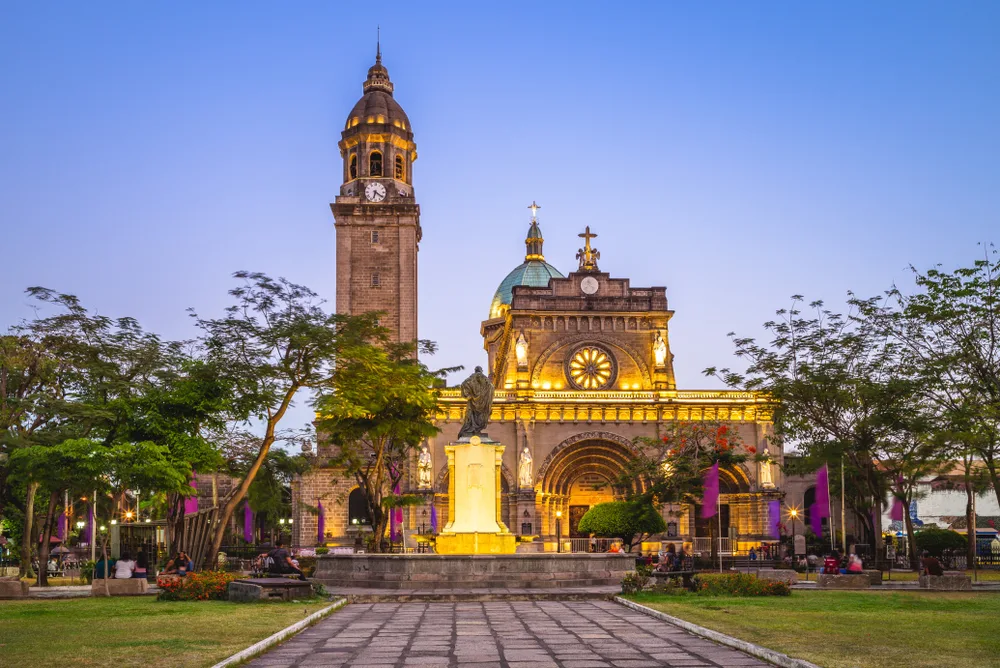
Richie Chan/Shutterstock
Before you jet off to the Philippines, take a look at some of the most frequently asked questions from travelers who are planning on taking a trip to the islands. You might learn something new!
What month is rainy season in the Philippines?
The rainy season in the Philippines typically runs from May to November or December. Some areas, like Manila and Baguio, experience heavier rains. Palawan and Mindanao tend to be drier during this time.
What month is the hottest in the Philippines?
April and May are the hottest months in the Philippines, with temperatures ranging from 89°F to 93°F. Manila tends to be slightly warmer than other islands. These months can feel particularly intense across the country.
What month is not peak season in the Philippines?
The least busy time to visit the Philippines is from April to June. This period falls between the dry season and the start of the rainy season. It’s perfect for avoiding crowds and enjoying lower hotel prices.
How many days are enough in the Philippines?
7-10 days is ideal for exploring one or two islands and enjoying key activities. For a more extensive trip, 2-3 weeks would allow you to visit multiple destinations. This timeframe offers a balance of relaxation and adventure.
How much money do I need for 7 days in the Philippines?
For a 7-day trip, expect to spend around $3,750 if traveling solo. This includes airfare, hotel, food, and daily expenses. For two people, the total could be around $5,500.
So, What’s the Best Time to Visit the Philippines?
You can’t beat a trip to the Philippines between January and April — the prime part of the dry season with ideal weather for beaches, river trips, jungle hikes, and city sightseeing. Save a little scratch by visiting in March, the cheapest month of the year to go!
You’ll appreciate the smaller crowds and less hectic vibes of the April to June period, when the islands are less busy with the arrival of the monsoon season, but try to avoid going in July or August — these are the rainiest, stormiest, and worst months to visit.
The diversity, culture, and beautiful volcanic and tropical landscapes of the Philippines make it a dream destination for world travelers. Now that you’re armed with the best time to visit, you can plan an incredible trip to this captivating place!



